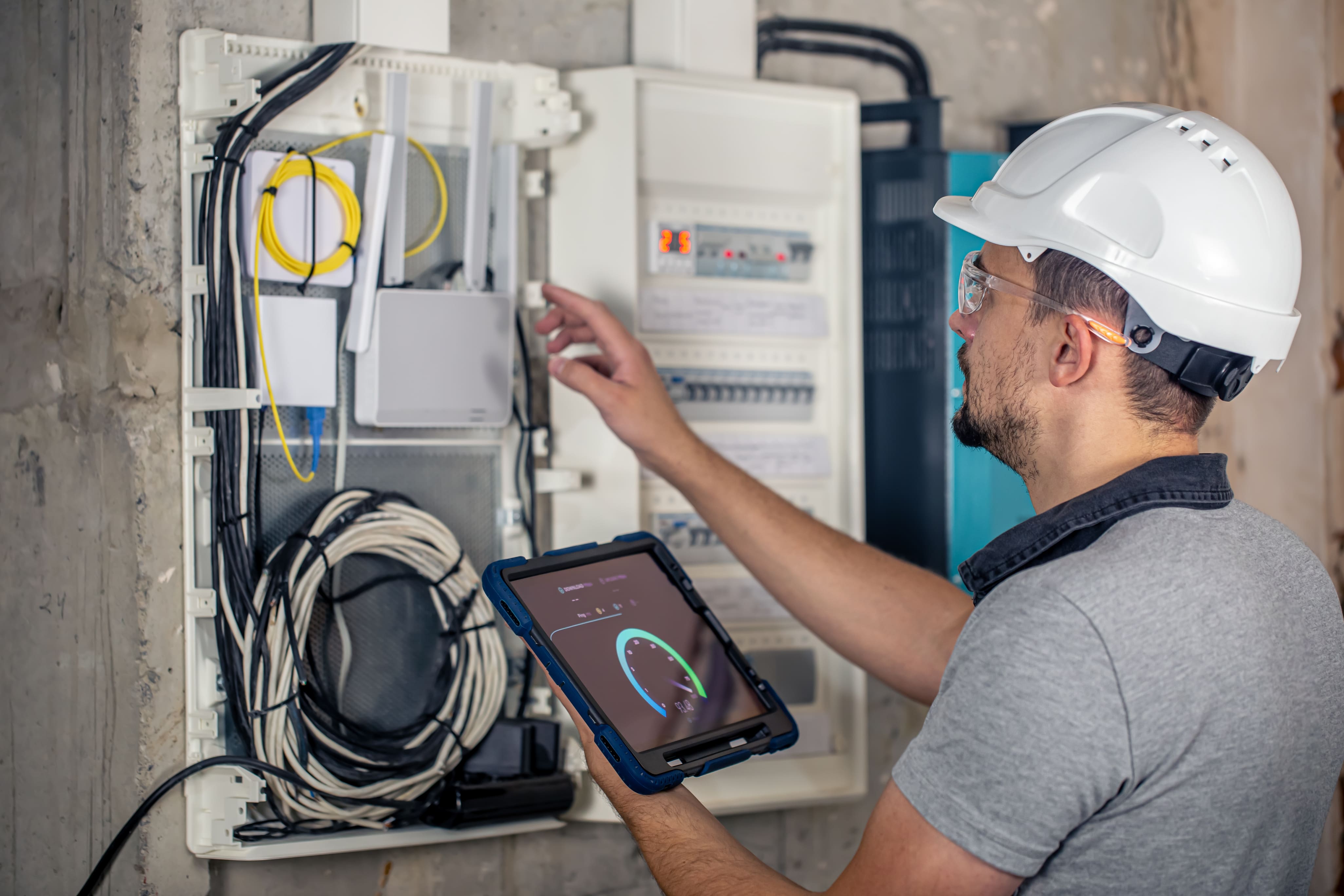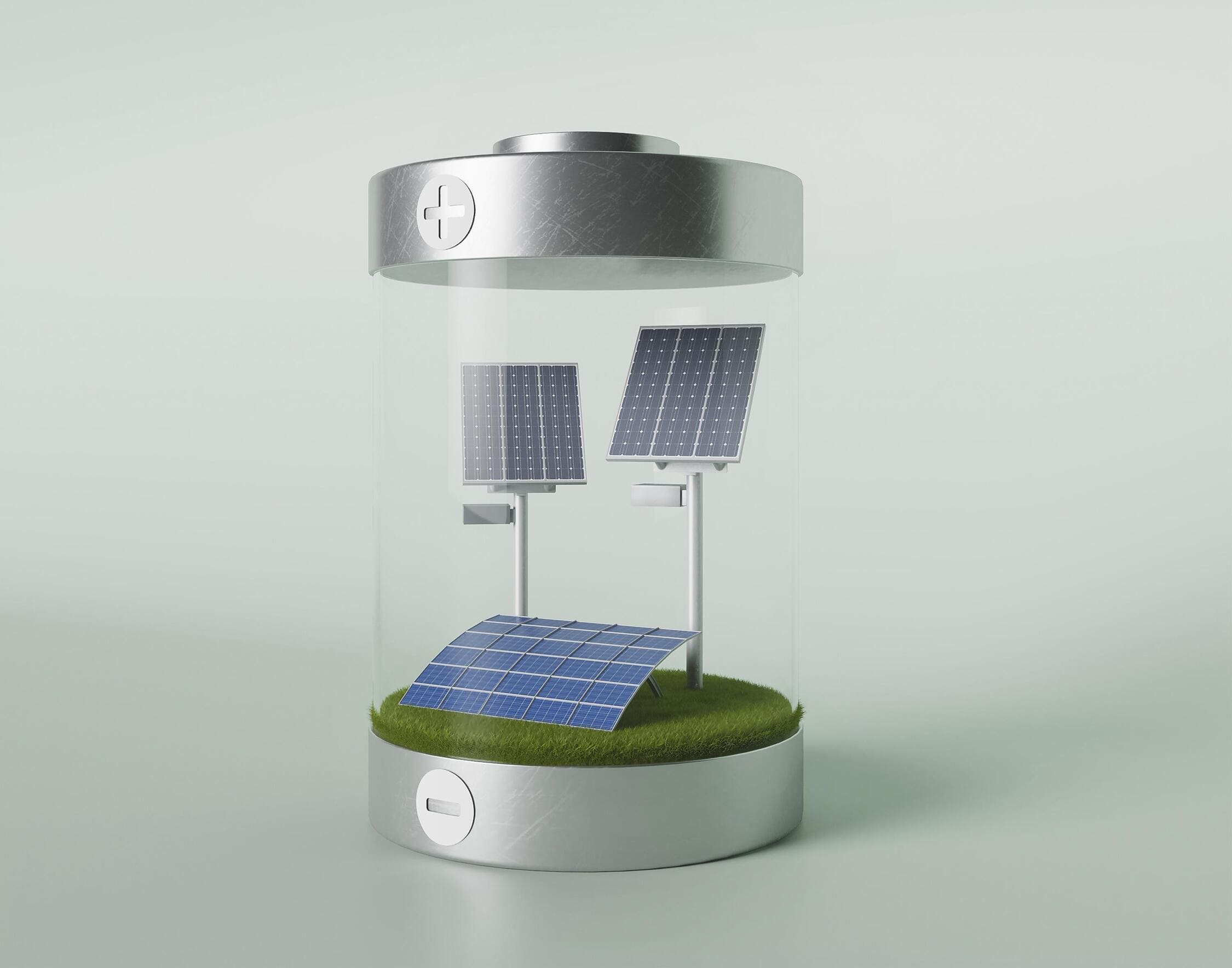

What is PV interconnection and net metering? PV interconnection is the technical and legal process of connecting your solar panel system to the utility grid, requiring an agreement and safety inspections. Net metering is the billing mechanism that credits you for excess electricity your system sends back to the grid, typically at retail rates.
Installing solar panels is just the first step toward energy independence. To legally operate your system and receive compensation for the power you generate, you must complete two critical processes: grid interconnection (the physical connection to utility infrastructure) and net metering enrollment (the financial crediting system). Without proper interconnection approval, your solar system cannot be turned on. Without net metering, you won't receive credits for your excess energy production.
Here's what you need to know:
Timeline: The interconnection process typically takes 2-6 months, though streamlined programs can reduce this to days
Requirements: You'll need an interconnection agreement, approved inverters with anti-islanding protection, accessible disconnect switches, and electrical inspections
Compensation: Traditional net metering credits excess energy at full retail rates (1:1), while newer policies like net billing offer lower wholesale rates
Costs: Application fees range from $0-$500 depending on your utility and system size
Why this matters now: As of 2025, many utilities are transitioning from favorable net metering policies to net billing or time-of-use export rates that reduce compensation for solar exports. Understanding these policies before installation helps you make strategic decisions about system sizing and battery storage that protect your investment.
This guide walks you through the complete interconnection process, explains how different net metering policies affect your solar economics, and shows you how battery storage can maximize your savings regardless of policy changes. Whether you're planning your first solar installation or optimizing an existing system, this information helps you navigate the technical requirements and financial mechanisms that determine your solar system's real-world performance and profitability.

Interconnection serves as the link between your personal solar energy installation and the communal utility infrastructure. It's a regulated procedure controlled by technical and legal benchmarks to guarantee a secure and dependable connection for all users.
Grid interconnection represents the physical and contractual procedure of connecting your solar PV installation to the utility's power network. After connection, you can access electricity from the grid during periods when your panels generate insufficient power, such as nighttime hours. More crucially, you can transmit your surplus solar output to the grid for community consumption.
This necessitates an interconnection agreement with your regional utility provider. This contract specifies the terms, conditions, and safety protocols for your installation to function alongside the grid. Without this authorization, your installation cannot be legally activated.
Utility companies implement rigorous technical benchmarks, frequently termed 'grid standards,' for any generation installation connecting to their network. These regulations aren't random; they exist to preserve grid reliability and security. Essential specifications typically encompass:
Safety Mechanisms: Your installation must feature an accessible isolation switch enabling utility personnel to disconnect your installation during grid maintenance or emergency situations.
Inverter Requirements: Contemporary inverters must possess particular functions, such as automatically deactivating during a grid failure to prevent reverse electricity flow, which could jeopardize utility workers.
Installation Verification: A certified electrician and municipal building inspector must confirm the installation satisfies all electrical and safety regulations before the utility issues final authorization.
The International Energy Agency (IEA) emphasizes in its publication, Getting Wind and Solar onto the Grid, that although all generation facilities must satisfy connection benchmarks, renewable sources like solar frequently face additional requirements to guarantee they enhance, rather than compromise, the grid.
Although specifics differ by utility provider, the interconnection procedure typically follows a defined sequence:
Submission: You or your contractor file an application with the utility company, providing system specifications and equipment information. Working with professional solar design services can streamline this initial phase significantly.
Technical Assessment: The utility's engineering team examines the submission to confirm it satisfies their technical criteria and evaluate its potential influence on the regional grid.
Contract: Upon approval, you'll obtain an interconnection agreement for signature.
Setup & Verification: Your installation proceeds according to the authorized specifications and clears municipal electrical inspections.
Authorization to Operate (PTO): Following a concluding assessment (and occasionally a utility inspection), the utility issues official Authorization to Operate. Only at this point can you energize your installation and begin power transmission.
Optimizing this procedure can substantially accelerate solar deployment. For instance, an initiative in Chicago, described in the EERE Success Story on Chicago Solar Express, successfully reduced permit processing times from over 30 days to merely one day, enabling residents to adopt solar more rapidly and economically. Understanding solar permitting timelines helps set realistic expectations for your project.

While interconnection provides the physical link, net metering establishes the financial framework that creates value. It represents the policy that establishes your compensation for surplus electricity your PV installation delivers to the grid.
Consider net metering as an accounting mechanism for your power generation. When your solar installation produces more electricity than your residence consumes, the extra power transfers to the grid. Your utility meter, usually a bidirectional model, monitors this transmission. At billing cycle conclusion, the utility deducts the energy you delivered from the energy you consumed.
You're billed exclusively for your 'net' usage. Should you deliver more than consumed, you generally obtain a credit on your statement, which can carry forward to offset future periods when your solar generation is reduced, such as winter months.
With conventional net metering policies, the credit for your delivered energy often equals the complete retail electricity price. This equivalent exchange delivers maximum financial benefit for solar investors. These advantageous policies have been a principal catalyst for residential solar expansion globally. The IEA's Renewables 2024 report emphasizes that attractive incentives, including net metering, explain the swift growth of distributed solar PV in areas like Europe.
Nevertheless, as solar deployment increases, certain utilities are transitioning from this framework. Alternative policies like net billing, purchase tariffs, or time-based export pricing may provide reduced compensation for delivered power, altering the financial equation for solar investors. Understanding regulations and permits for solar energy projects is crucial before making investment decisions.

The changing policy environment makes combining your solar installation with a battery energy storage system (ESS) an increasingly strategic approach. Storage provides greater authority over the energy you generate.
A solar-exclusive installation has constraints. It produces no power after dark, and its financial performance relies substantially on the utility's net metering policy. When compensation for delivered power is minimal, transmitting your valuable solar energy to the grid for minimal return isn't optimal.
An energy storage system addresses this. It enables you to reserve your surplus solar energy produced during daylight rather than delivering it immediately. This reserved energy can subsequently power your residence after sunset, delivering genuine energy autonomy and safeguarding you from grid interruptions. For those interested in energy independence, exploring off-grid solar system design options can provide additional insights.
With battery integration, the central objective transitions from power delivery to optimizing 'direct consumption.' Your system's management unit strategically routes energy: initially to power your residence, subsequently to fill the battery, and delivering to the grid only as a final option. This approach proves especially effective in regions with net billing, since you prevent selling your solar power to the utility at minimal rates and subsequently repurchasing it at elevated rates.
To extract maximum benefit from this configuration, comprehending your system's characteristics is critical. As detailed in the Ultimate Reference for Solar Storage Performance, measurements like Round-Trip Efficiency (RTE) are essential. Elevated RTE indicates minimal energy loss during battery charging and discharging cycles, directly increasing your cost reduction and the comprehensive worth of your investment. If you're considering DIY options, our guide on how to build a LiFePO4 battery pack provides detailed technical information.
The solar policy environment is fluid. Remaining informed and implementing strategic decisions can safeguard your investment long-term.
As solar deployment expands, utilities must adapt to a changing grid. The IEA describes how extensive solar generation establishes a revised 'net demand' pattern, representing total power demand minus variable renewable output. This operational transformation is encouraging regulators to reassess compensation frameworks. Numerous regions are shifting from net metering to alternative approaches.
Disclaimer: This table offers a broad summary. Individual policies differ considerably by region. This information isn't financial or legal guidance.
Understanding local AHJ solar requirements is essential as these authorities often determine which policies apply in your jurisdiction. Additionally, community planning resources can help you understand regional policy variations.

Integrating your solar installation to the grid marks a milestone toward energy autonomy. PV interconnection provides the technical and legal pathway, while net metering policies establish the financial advantages. By comprehending the sequential procedure, the technical specifications, and the worth of your delivered energy, you can maneuver through the system confidently.
As the energy sector transforms, integrating an energy storage system becomes a strategic method to optimize direct consumption and protect your investment against policy modifications. Proper solar PV grounding and bonding ensures your system meets safety requirements, while attention to wire management and conduit practices guarantees long-term reliability. Understanding structural load considerations is also critical for safe and compliant installations.
Investing effort to grasp these regulations empowers you to maximize your solar and storage installation, establishing a resilient and economical energy future. For commercial installations, specialized commercial solar design services can address the unique requirements of larger-scale projects.
Mastering PV interconnection and net metering is fundamental to unlocking your solar system's full value. Interconnection provides the technical and legal pathway to connect your installation to the utility grid, while net metering establishes the financial framework that compensates you for excess energy production.
As utilities transition from traditional net metering to alternative compensation models, strategic planning becomes essential. Battery storage integration is increasingly critical, it maximizes self-consumption, reduces dependence on export rates, and protects your investment against policy changes.
Success requires understanding the step-by-step interconnection process, meeting technical requirements like safety equipment and inverter specifications, and staying informed about your local net metering policies. Work with experienced installers who navigate utility applications efficiently and ensure your system meets all grid codes for swift approval. Solar permit expediting services can significantly reduce approval timelines.
Your solar investment delivers maximum returns when properly connected and strategically configured. By comprehending interconnection requirements and net metering compensation structures, you ensure your system operates legally, safely, and profitably, securing long-term energy independence and cost savings regardless of evolving utility policies. Resources like SolSmart's permitting guidelines and state-specific solar guidebooks provide additional support for navigating these processes.
How do interconnection and net metering differ?
Interconnection represents the physical and legal procedure of linking your solar installation to the utility's grid. Net metering constitutes the billing framework that provides credits for surplus electricity you transmit to that grid. You must finalize interconnection before accessing net metering benefits. For more information on navigating these processes, visit Solar Permit Solutions.
What's the typical duration for the PV interconnection procedure?
The timeframe can fluctuate significantly, ranging from several weeks to multiple months. It relies on your utility's operational efficiency, your project's complexity, and whether any grid improvements are necessary. Initiatives like Chicago's Solar Express demonstrate that optimized procedures can substantially decrease this waiting period. Understanding solar PV construction codes and permitting can help expedite the process.
Is a battery necessary with my solar installation?
A battery isn't mandatory for a grid-connected installation, but it's strongly advised. It delivers backup power during interruptions and enables you to reserve surplus solar energy for nighttime consumption. This proves particularly beneficial in regions with minimal export compensation pricing (net billing), since it maximizes your financial savings by boosting self-consumption. Consider reviewing solar panel racking systems to ensure proper structural support for integrated battery systems.
What occurs when my utility modifies its net metering policy?
Frequently, current solar customers receive 'grandfather' protection under the policy active when their installation received approval, shielding them from subsequent modifications for a designated duration. However, new customers face the revised regulations. This unpredictability provides a compelling reason to evaluate battery integration, which reduces your reliance on utility export pricing. Understanding land use and permitting processes can help you navigate policy changes.
Is obtaining a solar installation permit challenging?
Permitting complexity depends on your municipal jurisdiction. Certain regions offer streamlined, digital procedures, while others may demand additional documentation and extended assessments. An accomplished solar contractor proves invaluable in managing this procedure effectively. As initiatives like the Plug and Play PV system illustrate, there's a robust industry movement to simplify both installation and interconnection to make solar more attainable for all users. Contact our team for assistance with your permitting needs, or explore ordinance considerations for solar development for additional guidance.
For more insights on solar installation and permitting, visit our blog for the latest updates and guides.
We are dedicated to providing top-notch solar permit services to homeowners, business owners, DIY, and solar installers. Contact us today.